Rooftop Gardening Movement
In response to rapid urbanization and decreasing green spaces, urban rooftop gardens have become a unique solution. While they have historical roots in the Hanging Gardens of Babylon, their popularity in modern times is mainly due to 20th-century innovations and the need to make cities more sustainable. Urban rooftop gardens, commonly referred to as green roofs, consist of planting vegetation on the roofs of buildings. They can range from basic designs with ground cover plants to more intricate setups that incorporate trees, shrubs, and various plant types. Some green roofs are even utilized for urban farming, cultivating fruits, vegetables, and herbs for local consumption.
Rooftop gardening has a long history, with city residents creatively planting on roofs and fire escapes for generations. Green roofs, featuring soil and plant coverings, have also been in existence for years. As the quest for additional gardening space persists, rooftop gardens, both in residential and commercial settings, are gaining popularity. The appeal of rooftop gardens includes efficient use of underutilized space, improved aesthetics in barren areas, privacy, environmental friendliness, ample sun exposure, and freedom from ground-dwelling pests like deer and rabbits.
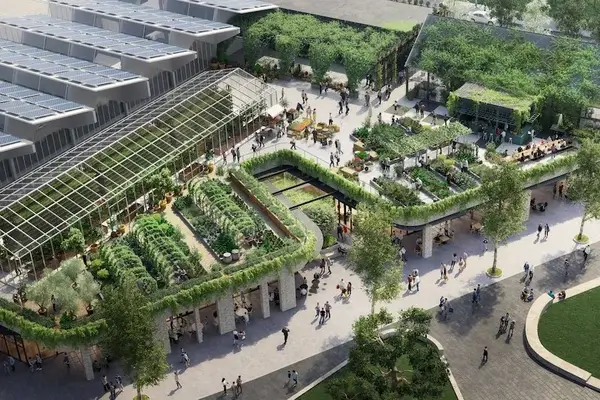
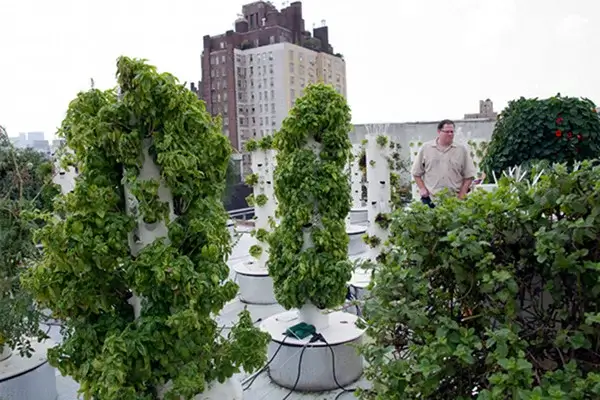
Environmental and Societal Advantages
Urban rooftop gardens offer multiple benefits, both for the environment and society. They improve air quality by absorbing carbon dioxide and releasing oxygen, acting like green lungs in the city. Additionally, they help counteract the urban heat island effect, where urban areas become considerably hotter than their surrounding rural regions due to human activities.
In terms of biodiversity, these rooftop areas can act as vital habitats for various insects, birds, and small animals, contributing to urban biodiversity. From a water management perspective, rooftop gardens can soak up and filter rainwater, reducing runoff and the risk of flooding. From a social perspective, rooftop gardens can provide valuable spaces for recreation and community activities in densely populated cities. They also offer opportunities for urban residents to participate in gardening or farming, fostering a connection with nature and food sources, which is often lost in urban environments.
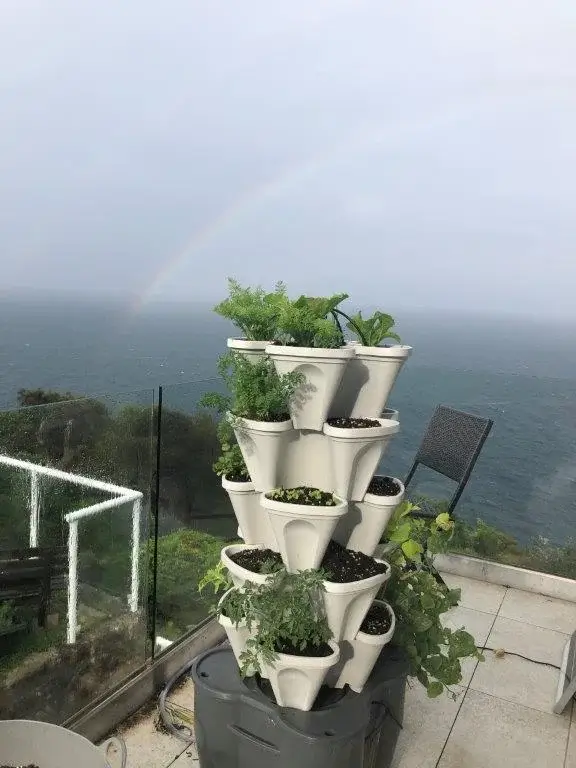
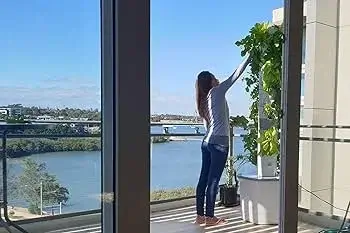
Anticipating What the Future Holds
Considering the ongoing expansion of cities and the decreasing availability of green areas, the significance of urban rooftop gardens is set to rise. They serve as a creative remedy for various urban issues, bolstering environmental sustainability and enhancing the living conditions in crowded urban zones.
Nonetheless, the extensive adoption of green roofs necessitates favorable policies and construction regulations, along with public awareness and education. Given their multitude of advantages, urban rooftop gardens showcase human innovation and our capacity to establish green havens in the most unexpected locations – high above us, amidst the cityscape.
Where Architecture Meets Agriculture
Urban rooftop gardens are a captivating blend of architecture and agriculture. Architects strive to create rooftop spaces that are not only sturdy and practical but also visually appealing. This has led to innovative designs that turn urban rooftops into lush, green retreats.
On the agricultural front, the endeavor involves carefully selecting plant species that can flourish in rooftop conditions. The choice of plants is influenced by factors such as the local climate, the amount of sunlight the roof receives, and the maintenance capacity. In the case of edible gardens, crop selection typically revolves around robust plants suitable for container growth and requiring minimal upkeep.
Challenges
Integrating rooftop gardens into architectural design presents distinct complexities, requiring meticulous planning and engineering. Primarily, the structural stability of the building must be evaluated to ensure roofs can withstand the extra load of soil, plants, and water. Additionally, the garden necessitates proper insulation and waterproofing to safeguard the structure from potential leaks and water-related harm.
Drainage is another crucial factor to account for. An effectively planned rooftop garden should incorporate a reliable drainage system to avert water accumulation, which can harm both the plants and the roof structure. This also connects with the requirement for an appropriate irrigation system, especially in areas with limited rainfall.
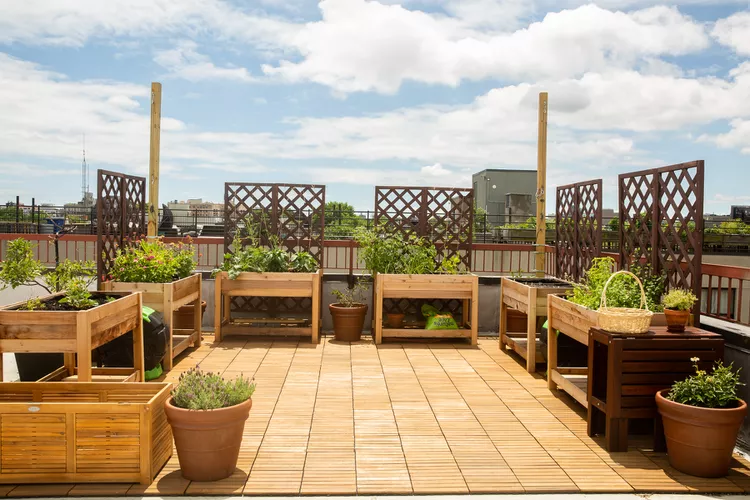
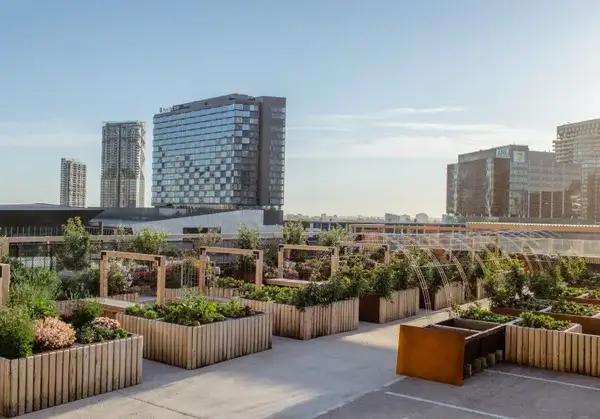
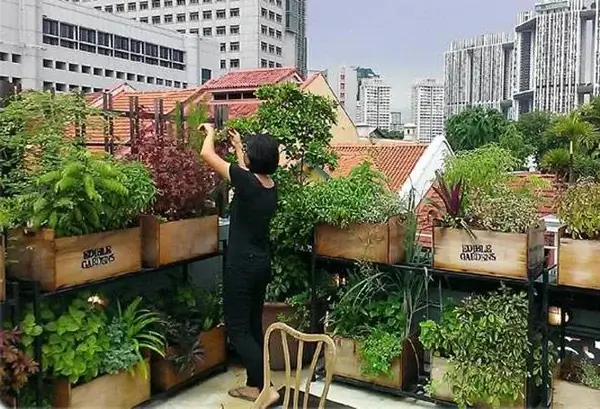
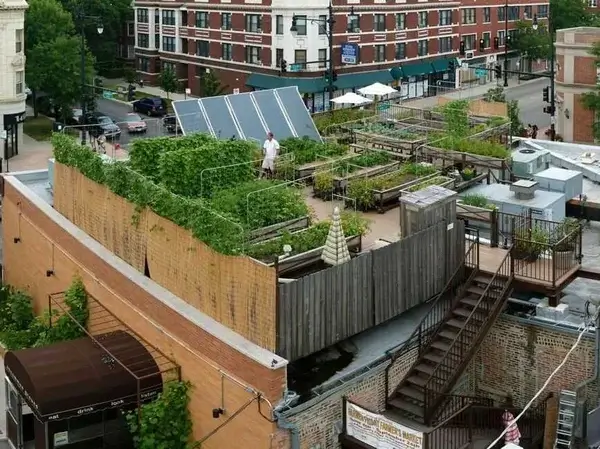
Planning your own Rooftop Garden
Interested in growing your own rooftop vegetables and herbs? When contemplating a rooftop garden, you have a couple of options. Fully planted green roofs, where the roof is covered with soil and plants grow in it, are environmentally beneficial but can be too challenging for homeowners to tackle independently. The weight of green roofs can exceed 100 lbs. per sq. ft., even before adding people. To undertake this, you’d likely need to hire a structural engineer or architect for a structural analysis and probably enlist a professional company for installation.
The simplest and most personal approach to rooftop gardening involves using containers and raised beds. With container-grown plants, you can create any style of rooftop garden, from a few basic herb plants to a formal, sophisticated potager. Containers are ideal for rooftop gardens because they are lightweight, portable, adaptable, and cost-effective.
Rooftop Gardening with Mr Stacky
If you’re considering an easier and more favorable alternative, you can become an urban farmer and purchase your own Mr Stacky system, installed on your balcony.
Whether you just want a small herb garden or a larger, more diverse project, if the idea of urban farming has piqued your interest, you might be wondering what you need to do to get started.
Becoming an urban farmer is actually quite simple. Follow these steps and you’ll be well on your way to having your own farm:
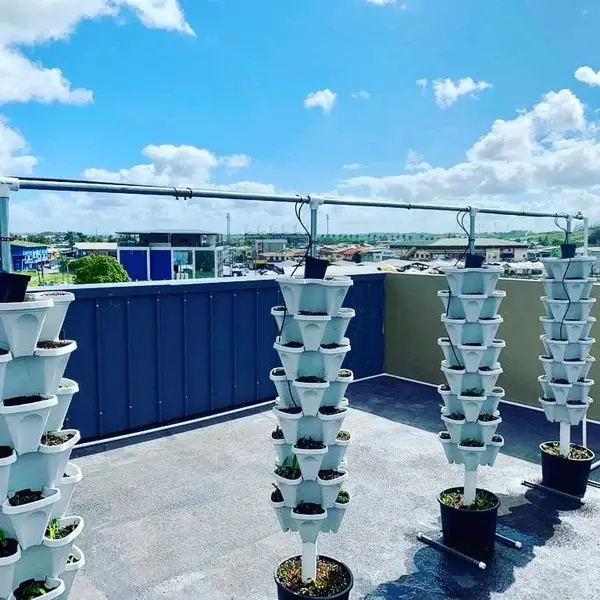
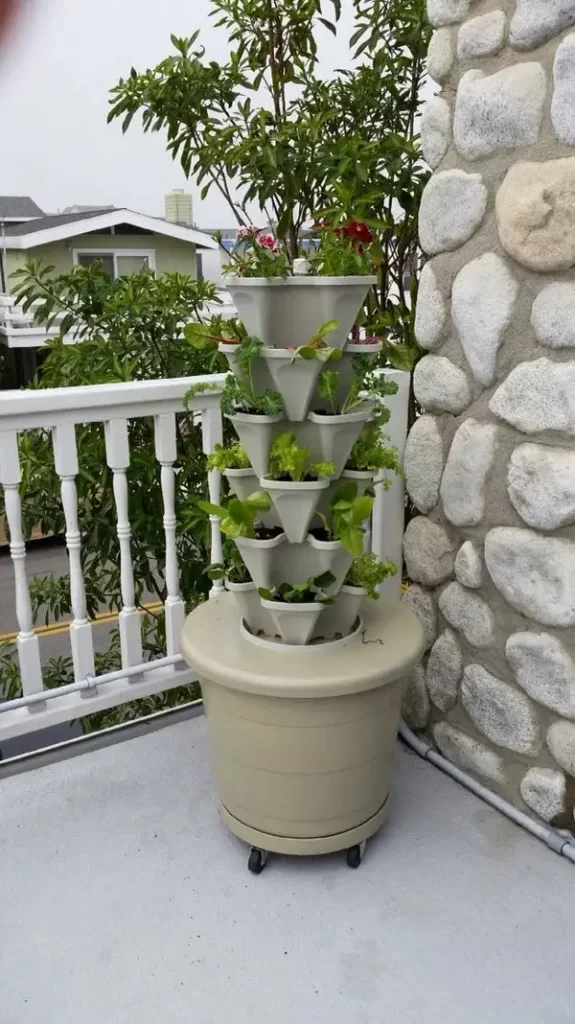
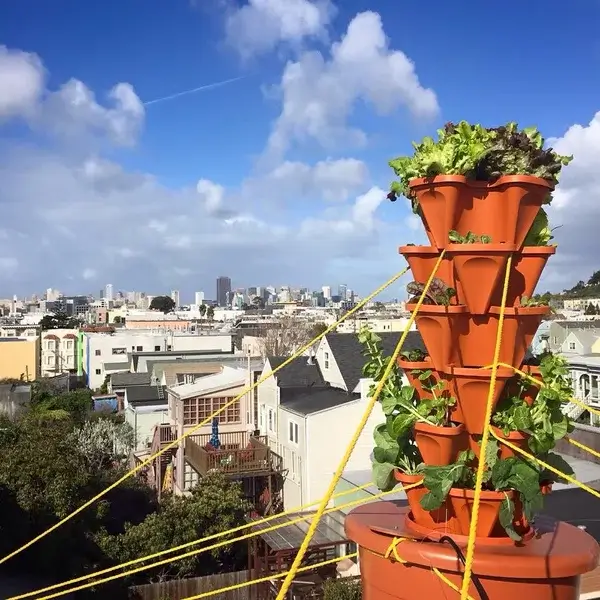
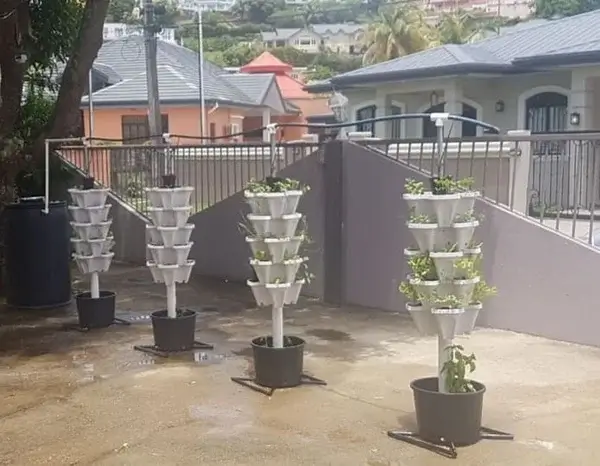
Explore Training: At Mr. Stacky, we’re urban farming experts, specializing in Vertical Hydroponic Farming! We offer comprehensive training covering essential topics like suitable locations, light requirements, nutrient management, natural disease and pest resistance, ongoing maintenance, and more.
Develop a Business Plan: If you’re considering selling your produce, creating a business plan is crucial. Even if you’re unsure about selling, it’s beneficial to outline your approach to the business.
Find the Right Location: In the southern hemisphere, the ideal garden location is one with a northeast aspect, sheltered from strong winds, and of sufficient size. If space is limited, we recommend exploring vertical gardening, which is the optimal method for small spaces thanks to modern technology.
Master Early Harvesting: Prioritize research on crop rotation and proper harvesting, storage, and processing techniques. Avoid letting plants grow too long, as this can result in bitter-tasting produce and a shortage of seedlings for replanting. We recommend maintaining a constant supply of seedlings through seed propagation or store-bought options.
Curious to Learn More? Now that you have an understanding of urban farming, are you interested in pursuing it yourself? If so, explore our extensive list in growers resources, covering everything from vertical and hydroponic gardening to basic gardening tips to ensure the health and vitality of your garden. Alternatively, feel free to reach out to Mr. Stacky for personalized assistance.
setting up and Maintaining a Rooftop Garden
Permission: Begin by consulting your landlord and/or reviewing the building code. Inquiries regarding accessibility, building height limitations, and fire safety regulations may pose restrictions on roof utilization of any kind.
Structural Stability: Ensure the roof can support the weight. It’s advisable to enlist a licensed professional for this assessment. Soil and containers are initially heavy and will become even heavier as the plants mature. If you’ve ever attempted to move a container filled with damp soil, you’re aware of the significant weight water contributes.
Sunlight Exposure: Do nearby buildings or the terrace above cast shade over your location? Even partial sunlight can be challenging when plants are exposed to the heat of concrete surfaces.
Heat: In addition to direct sunlight, you’ll contend with radiant heat from the roof, nearby buildings, streetcars, and metal exhaust and utility fixtures. It’s likely that you’ll want to incorporate some form of shade, not only for the plants but also for your comfort.
Wind: Wind can gust strongly through urban canyons, particularly around tall buildings. It might be advisable to consider installing some form of wall or fencing. If you decide to do so, make sure to review the building code for necessary heights and structural stability, especially when safety considerations dictate the need for barriers for children and pets.
Privacy: Many rooftops are bordered by adjacent buildings. If you intend for your rooftop garden to be visible, it’s worth considering privacy measures. You can opt to plant evergreen hedges, train vines to climb a trellis wall, or create a cozy space with the addition of an umbrella table.
Storage: Gardening comes with various equipment and supplies such as tools, fertilizer, compost, and buckets. Space limitations on a rooftop can make concealing a storage area challenging. Opting for shelves is a practical solution. Some rooftop gardeners choose narrow closets for storage, while others consider bench seating with built-in storage to serve a dual purpose.
Cost: Lastly, consider your budget. You can start small and gradually expand by acquiring additional pots, plants, and soil as needed. The significant expenses arise when you decide to add hardscaping elements and structures to the rooftop. Installing tiles or stone, constructing raised beds and containers, incorporating lighting and furniture, all come with costs that can accumulate. Structural enhancements may also be necessary to support these additions.
Irrespective of whether you begin with a sizable or modest design, a rooftop garden represents an investment in tranquility for numerous city residents, offering moments of relaxation and fulfillment.
Australia falls behind global cities in using green roofs.
According to Paul Osmond, a sustainable development researcher at the University of New South Wales. Osmond served as a technical advisor to the City of Sydney when it established its green roof policy nearly a decade ago.
At that time, Sydney’s Central Business District (CBD) boasted approximately 40 green roofs. Since then, this number has roughly doubled. However, while this increase may seem noteworthy, it remains a relatively small proportion, placing Sydney significantly behind numerous international cities in the green roof movement.
The situation in Melbourne mirrors Sydney’s, where in 2019, Deputy Lord Mayor Nicholas Reece wrote a passionate article in The Age newspaper advocating for the incorporation of green roofs into the city’s buildings. A survey conducted by the City of Melbourne at the time revealed that just 40 rooftops in the CBD featured gardens. Today, Reece estimates that this figure has only marginally increased to between 50 and 60 green roofs.
Although there has been some modest growth, Cr Reece is eager to see a significant acceleration of this trend across the country.
According to him, Australia requires a green roof revolution. He emphasizes that the currently unused rooftops of Australian buildings represent an immensely untapped resource with the potential to create substantial new green areas in the heart of our largest cities.
So, what needs to occur to spark this revolution?
Cr Reece identifies two crucial factors that can propel a “great leap forward.” First, he believes it’s essential for people who invest in multi-Storey apartment buildings to insist on incorporating such green spaces into their buildings.
The second factor he underscores is the importance of regulatory measures.
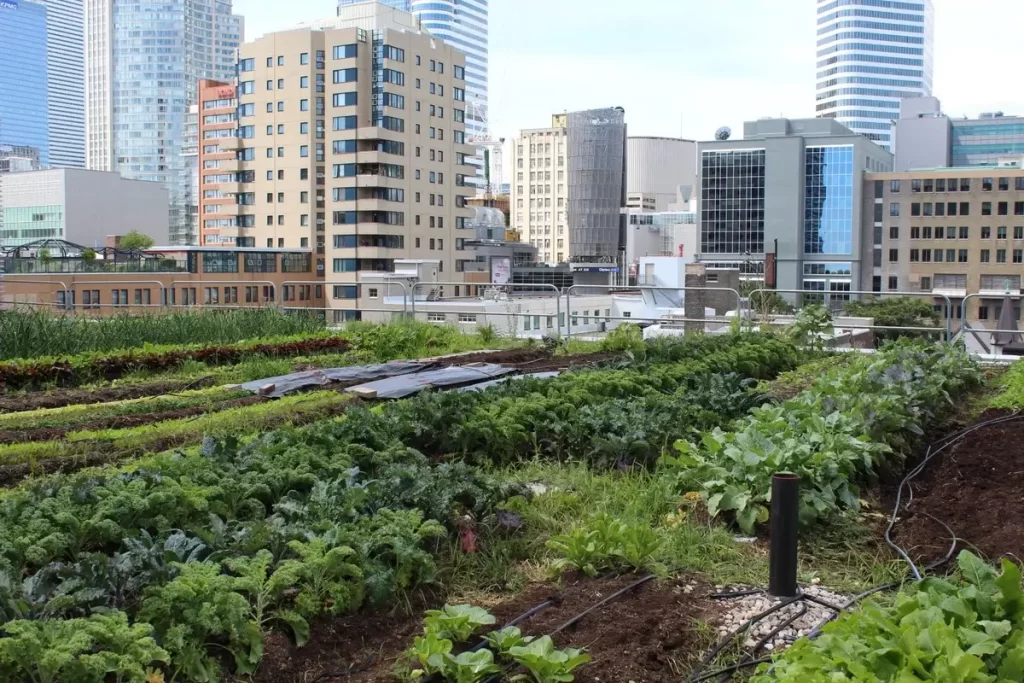
Toronto
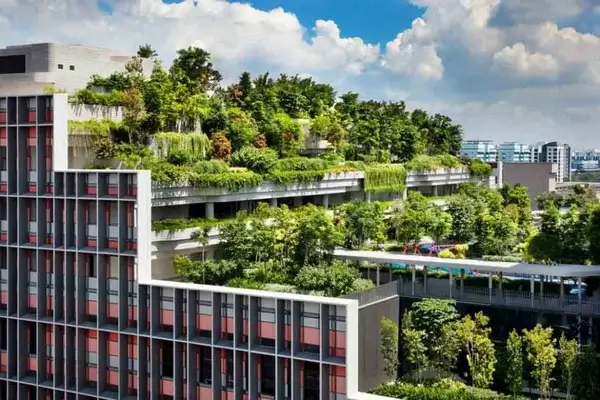
Singapore

London
“Cities such as Singapore, Toronto, Munich, Berlin, Chicago, London, Seattle, Tokyo, San Francisco, and most recently New York have all made their cities more environmentally friendly by implementing planning regulations that essentially make green roofs and green spaces a mandatory part of new developments,” he explains.
“In these cities, a combination of incentives and regulations is being used to promote the inclusion of more green spaces in private developments. Research conducted in various international cities confirms that the proliferation of green roofs in these areas would not have happened without these regulatory modifications.”
Source: ABC NEWS
https://www.abc.net.au/news/2023-09-11/rooftop-gardens-green-roofs-slow-to-emerge-in-big-cities/102823538
Best Crops Suited to Roof Gardens and Further Considerations
Herbs and vegetables are commonly cultivated on green roofs, typically in containers. However, they can also be grown directly in specialized growing medium or soil. In the latter case, it’s important to ensure that the roof can support a deep soil layer (greater than 8 inches) and the added weight of water required for the plants to thrive. When selecting edible plants for a rooftop garden, it’s advisable to opt for “patio” or dwarf varieties designed for containers and compact spaces. Generally, heat-loving plants like peppers, tomatoes, and basil tend to thrive in rooftop gardens. Crops such as peas and spinach, which prefer cooler conditions, may not perform as well. Look for plant varieties that are well-suited to withstand heat and are less prone to bolting when exposed to intense sunlight.
Rooftop gardens come with specific considerations, including sun exposure, wind, temperature, and accessibility. These gardens are often sun-drenched, which can be challenging for some food plants. Extra watering may be necessary to combat the adverse effects of constant sun and higher temperatures. Drip irrigation is recommended over overhead irrigation, as it’s less susceptible to wind dispersal. Rooftop soils dry out faster after rain, so mulching can help retain moisture between rainfall or irrigation. Additionally, keep in mind that wind speeds increase with building height, so stabilizing plants or containers may be required.
Ensuring safe access for fertilization, watering, and harvesting is essential. Consultation with a structural engineer may be necessary to ensure the garden doesn’t exceed the roof’s load-bearing capacity. Rooftop gardens can exert a load of 80 to 150 pounds per square foot, and water stored on the roof weighs about 8 pounds per gallon. However, it’s crucial to maintain moist soil or growing medium because food plants are less tolerant of drought compared to non-food plants. Lightweight growing media specifically designed for the load-bearing limitations of most roofs should be used; regular potting soil or ground soil is unsuitable for rooftop gardens.
Side note: Rooftop Gardens are a great business tactic used by restaurants and other local customers to use for growing lettuce, herbs and other vegetables for easy, efficient and cheap access.
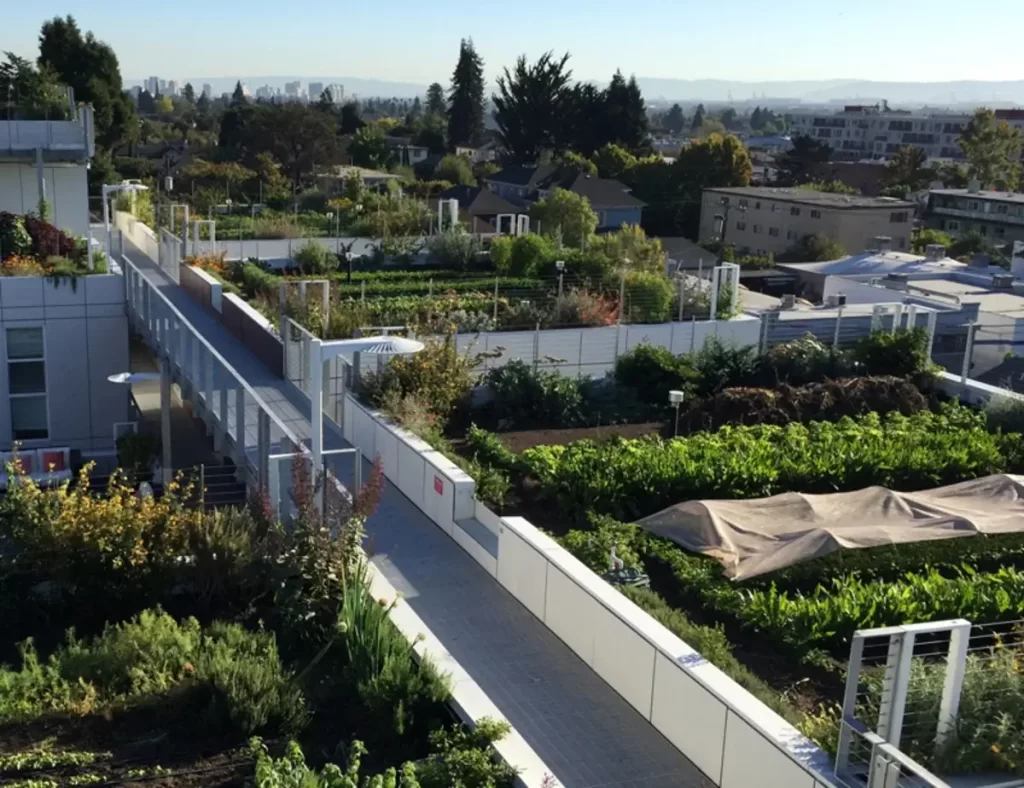
To Conclude
Rooftop gardens are the unsung champions of urban sustainability! Despite challenges like sunlight, wind, and accessibility, they’re steadily climbing to new heights, one green sprout at a time. Whether you’re cultivating herbs, vegetables, or crafting a lofty oasis, rooftop gardens are dedicated to making our cities more environmentally friendly and giving a green boost to our thumbs. These elevated green havens enhance our cityscapes by cooling them down, improving air quality, and providing a sanctuary for busy bees. So, whether you’re a gardening enthusiast, a fan of scenic views, or just eager to embrace Mother Nature, rooftop gardens are the ultimate thumbs-up for going green!

About the Author
Mr Stacky is the leader in Tower Garden Systems in Australia, specializing in commercial hydroponic farming, urban farming & residential vertical gardening.
Find out how he can help you achieve your food production goals. Contact Brian




